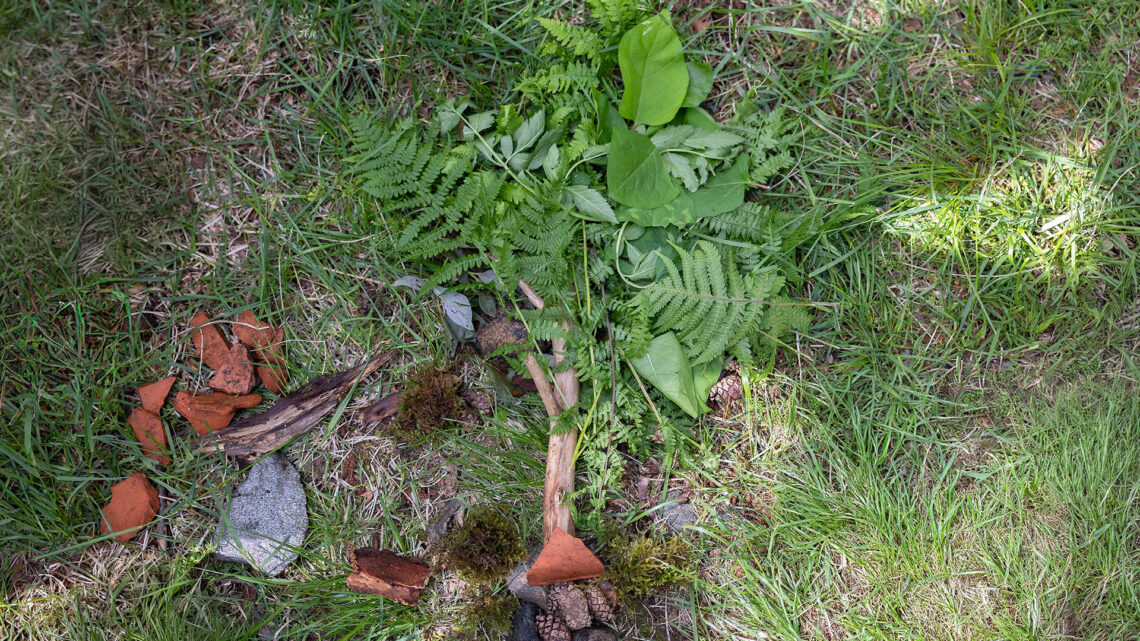
Objective
In Kim’s Game in Nature, we challenge the child’s working memory and concentration, whilst they are physically active during the game.
Instructions
- Gather all the children and explain the game.
- Send the children out into the forest/outdoor area to collect small twigs.
- Make a grid from the twigs, e.g. six squares.
- Then send the children into the forest to find one or two natural materials.
- Place the materials that they come back with in a separate square.
- The children shall now look at the grid and remember which natural materials are in the various squares.
- The adult then asks the children to turn around or close their eyes.
- The adult removes one of the natural materials.
- The children can now open their eyes and go out into the forest to fetch the natural material that is missing in the grid. The children do not say what it is, but run to fetch what is missing.
Tips
- In the beginning, it might be a good idea to play the normal Kim’s game first where the children shall say out loud what is missing. Once you know that everyone understands the game, the children can run to find what is missing in pairs or individually.
Variation
- One variation is to play Kim’s Game in the preschool’s outdoor play area. Here a range of equipment could be used as objects instead of natural materials, for example, buckets, spades, bean bags, balls and so forth.
- Another variant is to confine Kim’s Game within the boundaries of cloakroom or department: Here you could have, for example, four different objects, where each object is linked to a movement that must be done, for example, five times. For instance, if the bean bag is removed, the children must jump five times or if the toy car is removed they must turn around five times. The children can be involved in deciding which movements shall be linked to the different objects.
Equipment
Loose natural materials, such as cones, leaves, twigs, stones, etc.


